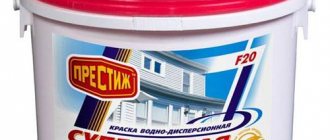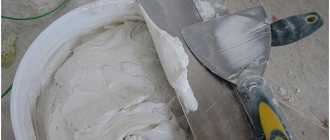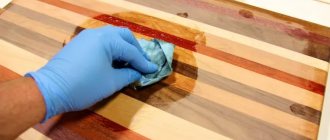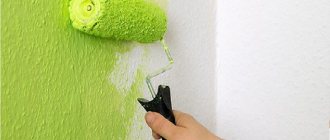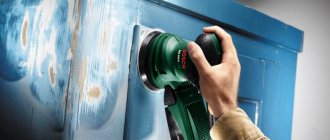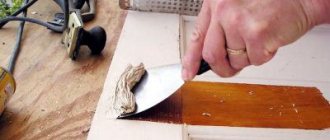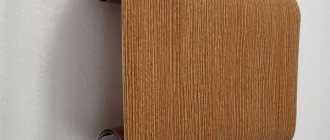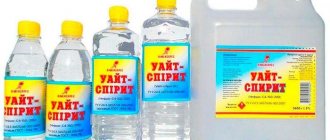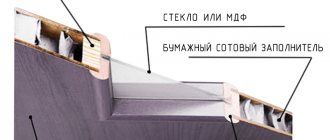In order to dilute the water-based coloring composition to the desired consistency, in most cases you just need to add ordinary water. But, to ensure that there are no complications when working with paint, you need to know the correct dosage and how the process is carried out correctly. Those who want the surface to be painted to look perfectly smooth and last for many years will be interested in learning how to dilute water-based paint and how to do it.
Manual addition of pigment to water emulsion Source kraski-net.ru
Advantages of water-based paint
No matter how bitter it is to admit, the appearance of such a high-quality and popular coloring material was preceded by a war (World War I) and subsequent devastation. It was necessary to restore the buildings and make the premises look decent for living. This required cheap materials. Meanwhile, most enterprises in the construction industry were not yet operating.
A talented German chemist working in the field of polymers discovered a new composition at the beginning of the last century. It became known as PVA. Based on it, the first paint was produced, which was applied to the walls and ceilings of houses. Soon new substances were synthesized and the composition of the water-based emulsion was improved, which made it possible to use it everywhere.
Basis for polyvinyl acetate water-based paint Source tkpanel.ru
The undeniable advantages of paint based on water emulsion:
- The compositions do not require special solvents. It is enough to use water to dilute the paint to the desired consistency or to wash your hands after work.
- There are no toxic elements, so the composition is considered as environmentally friendly as possible.
- The paint adheres perfectly to literally any surface, and the latter takes on a highly aesthetic appearance.
- The base composition can be painted in any color. This is done quickly using special pigments.
- The use of the material allows you to create a positive microclimate in the room. Because the painted surface continues to breathe.
- The speed at which the layer dries is related to the ability of water to evaporate. Therefore, one hour is enough for dust to no longer stick to the applied layer. And complete hardening of some types of water-based emulsion occurs in just 12 hours.
- In addition to the usual division into interior and exterior paint, there are several subtypes of it. Technologies have made it possible to distinguish interior, washing, and facade varieties.
- Unlike oil-based compositions, the smell of which disappears within a week, water-based emulsion practically does not emit any aroma. And what can be felt at the very beginning of the work does not have a sharp spirit, and evaporates within an hour.
The disadvantage is the lack of gloss. Therefore, the surface absorbs dirt faster. But since most compounds have a high water-repellent ability, it is not difficult to wash the stained surface. Most often, one movement with a rag is enough.
Washing dirt from a ceiling covered with water-based emulsion Source vuborke.ru
It is also noted that the paint is excellent for all porous surfaces, but does not adhere well to a glossy surface. Therefore, it is better not to use it for painting metals and plastics. The large amount of water in the composition does not allow it to adhere well to smooth materials.
Varieties
Today on the shelves of construction stores you can find only four types of water-based paints
Their difference lies in the polymer that is included in the composition, so you need to choose with caution. Main types of water-based paints:
- Silicate;
- Acrylic;
- Mineral;
- Silicone.
Acrylic paint
This is perhaps the most popular and affordable type of water-based paint. The main component is acrylic resin, which is why the substance got its name. Manufacturers often dilute the composition with latex.
This solution allows acrylic paint to actively resist water and protect the surface. It turns out that the painted surface can be easily washed with liquid, without worrying that the paint will lose color, peel off and become unusable.
Manufacturers often indicate on the cans that the paint can withstand up to 5 thousand washing cycles with ordinary water. Using a double layer of a substance diluted with latex filler, you can easily mask cracks and depressions on the surface up to 1 mm deep. The price of one container is affected by technical characteristics (composition, filling, etc.).
Silicone paint
This paint contains silicone resin (the situation is the same as with acrylic). The cost of one can is slightly higher. The paint is excellent for treating mineral surfaces and can easily cope with cracks up to 2 mm deep.
Silicone water-based paint for walls and ceilings is classified as a vapor-permeable component. This property allows the substance to be applied to damp surfaces or surfaces exposed to increased moisture. Paint helps get rid of fungus.
Silicate paint
Silicate water-based paint is based on a mixture of different components: a solution of water, liquid glass and pigments of different colors. This type of finishing material has excellent vapor and air permeable characteristics and serves as excellent protection from the environment. This type of emulsion paint can easily last over 20 years.
Mineral paint
Almost all mineral water-based paints consist of slaked lime and sometimes cement. It is one of the best solutions for applying to ceilings and walls indoors. The main purpose of this dye is to work with surfaces made of concrete or brick. However, mineral paint has one serious drawback - a relatively short service life.
The water-based polyvinyl acetate composition is obtained by rubbing various pigments onto polyvinyl acetate emulsion paint. The advantage of this solution is that dilution with water allows you to work with the substance even indoors (completely safe and non-toxic).
Types and features of water emulsion
The paint is based on a water suspension with tiny particles of polymers. And besides this, the composition includes up to 15 types of additives. After all, in order for the water-based emulsion to look good and stick to the surface, it must contain a plasticizer and thickener, a preservative and antiseptic, a dispersant and a corrosion inhibitor.
In addition, substances are needed that will increase structural viscosity. And at the same time they will reduce the ability to foam. And the amount of all these substances directly depends on what film former (copolymer) is used.
A wide range of water-based paints Source novosibirsk.vse-kraski.ru
The following dispersion can be used as a copolymer:
- versatovaya;
- acrylic;
- styrene-acrylate;
- styrene butadiene;
- latex;
- silicone;
- silicate;
- polyvinyl acetate.
It is because of the film former used that the purpose of the coloring composition changes. But in any case, it requires fillers. And mica and talc, barite and calcite play an excellent role in this role. But most often they use regular chalk to reduce the cost of the product.
Water-based paint with acrylic polymers Source farben-trefz.de
But in order to dissolve all these components, you need water that is completely purified from all salts and minerals. And in order to understand how to dilute water-based paint without losing all its positive qualities, you need to pay attention to its composition.
Polyvinyl acetate structure
Used for coloring all porous materials. From cardboard and wood to plastered walls. The paint is based on PVA glue and the composition is revealed 100% only in dry rooms, the air temperature of which does not exceed 27 °C. Not suitable for outdoor work at all.
Polyvinyl acetate based paint Source mrrestavrator.ru
When hardened, a semi-matte layer is formed, which is characterized by some porosity. This allows the water in the paint to evaporate faster. And the addition of the latter must be carried out strictly in accordance with the instructions from the manufacturer.
The main advantages are:
- The working composition is easy to apply, as it is easy to dilute with water to the desired consistency.
- No unpleasant odor because no toxins are used.
- Fire safety and UV resistance.
- Resistant to alkalis and mold.
Disadvantages include intolerance to low temperatures. Already at +6 °C there is a drop in all positive characteristics. And although the composition is considered moisture resistant, it is better not to use it in rooms with high humidity.
Application of paint based on PVA glue Source kraski-net.ru
Acrylic water-based composition
Thanks to the introduction of acrylic polymers into the paint structure, it acquires universal properties. The mixture fits well not only on porous surfaces, but also on metal and even glass. This creates a strong film that acts as reliable protection for a long time.
For the production and dilution of paint, only distilled water is used. And the composition is suitable not only for interior work, but it can be used to paint outdoor surfaces. You just need to check the manufacturer's instructions.
This product has more advantages:
- For quick drying, +15 °C is enough indoors and outdoors.
- The finishing layer is not afraid of sunlight and is easily washed off from dirt.
- It is not afraid of frost and retains its qualities at -30 °C.
- Does not contain environmental substances harmful to health.
- The copolymer creates a film that prevents cracks from forming on the surface.
- The paint is not afraid of fire.
- Suitable even for bathrooms.
- The guaranteed service life of the surface is at least 8 years.
There is only one negative side, apart from the high cost. The paint has low vapor permeability. Therefore, its use in some cases comes into question.
Applying acrylic water-based emulsion to the wall Source waysi.ru
Latex structure
Paint with any emulsion, such as acrylic, silicone, styrene butadiene or polyvinyl acetate, is easy to make washable. To do this, it is enough to add latex to its composition. The substance forms a film on the surface that repels moisture.
By the way. The latter remains as a paint thinner, even though it contains latex. It does not affect the ductility at all until the finishing layer has completely hardened. A special crystalline structure is created that does not interfere with wet cleaning and allows the surface to breathe.
Washable paint with latex added Source waysi.ru
Which is better?
To choose a paint for painting, you need to know its characteristics and take into account both price and technical features. You need to know what surface is at the base for painting, whether you will pre-prime it, what are the technical characteristics of this surface, whether it is located outdoors or indoors, in what room, how much time you need to paint and for this surface to completely dry.
To paint indoors, you need to consider what needs to be painted - walls or ceilings or some wooden, metal, glass surfaces. The microclimate in a given room is also important. All types of water-based emulsions are suitable for dry rooms; you just need to keep in mind that polyvinyl acetate, although the cheapest, can turn yellow over time, mineral ones are easily erased upon contact, and acrylic, latex and silicone ones are quite expensive. It is best to paint concrete or plastered surfaces with silicate water emulsion. But it is not very suitable for wallpaper for painting; here it is better to use latex.
For wet rooms, acrylic, latex and silicone paints are best. The only disadvantages of latex are that it is afraid of low temperatures and is not vapor-permeable, does not protect against condensation, as well as mold and mildew. All of these types are highly expensive.
All types of paint are also suitable for ceilings. You just need to take into account that for rooms with high humidity it is better to use mineral, acrylic, latex or silicone. At the same time, acrylic and silicone do not flow when painted and are more durable, although more expensive.
In what cases is it necessary to dilute the composition?
Before diluting water-based paint, you should always read the manufacturer's instructions on the packaging. From the name of the product, it becomes clear to most users that it can be diluted with water. But there may be serious restrictions, both in the quantity and composition of the liquid. And a reliable, reputable manufacturer always honestly warns about all cases.
Detailed instructions for using paint from the manufacturer Source homemasters.ru
In order to determine the need to dilute the water-based emulsion, it is enough to pay attention to its thickness. It depends on how much water was placed in the composition during manufacture or how much of it has already evaporated. And paint with the viscosity of thick sour cream usually goes on sale.
The jar with the coloring composition is opened and the contents are thoroughly mixed. This must be done with a wooden oar and for at least 5 minutes. The working density is determined by the flow of the composition from the mixer. If, when lifting the oar above the surface, the paint remains on it in the form of a thick layer, then dilution with water is required. When the liquid quickly flows back into the jar and only a thin layer remains on the surface, then you can immediately work with the composition.
Determining the density of the palette Source design-homes.ru
The need for dilution is influenced by the method of application to the surface. To work with a brush or roller, the consistency of the product must be sufficiently viscous. This is required to ensure uniform application and eliminate paint smudges on the surface.
When choosing a spray gun, the paint must be brought to a state in which it can easily pass through the nozzle. And to do this, you always need to reduce its viscosity by 1.5-2 times from the original one. If you choose the right proportions, you don’t have to worry that the paint will spread over the surface. High pressure and separation when leaving the nozzle into suspension allows the composition to lie more evenly and densely on the plane. The main thing is not to overdo it with dilution.
There are situations when paint storage rules are violated. This usually happens when the container is not tightly closed. The slightest gap allows evaporation to occur and the water emulsion begins to thicken. If this is not prevented, then the composition becomes completely unusable, simply drying out.
View of paint dried in a can Source pxhere.com
But when trouble is noticed in time, the paint can be saved. Just add water to it and mix thoroughly. If the components have not yet dried, they return to their performance characteristics. And you can safely paint your plans with the composition, following all the manufacturer’s recommendations.
Many beginners do not know what to do if a large amount of water was added during dilution. When, when stirring, the composition flows very quickly from the oar and does not even have time to gain a foothold on the surface. For this case, there are special thickeners that are added in strict accordance with the instructions.
But if time permits, then you can take a simpler path. To do this, take a break from work and leave the paint container open. Evaporation will do its job on its own. It is only necessary to regularly check the degree of consistency. And having found the one you need, you can immediately start painting.
Applying paint to a wall with a roller Source vyborok.com
Coloring instructions
There are several ways to whiten a ceiling with water-based paint without streaks; various tools are used for this purpose.
Painting with a roller
You can get excellent ceiling coloring using a roller. This option is quite economical, and even a beginner can cope with the whole process. It is enough to follow the following tips, which explain how to paint step by step with this tool:
- Before painting, the room is prepared for work. It is advisable to glue the wall at the junction with the ceiling with paper tape so that the water emulsion does not get on the wall;
- Objects in the room should be covered with paper or film;
- Mix the material thoroughly, especially if colored dye is added to the white base;
- For the initial layer, a material of a thicker consistency is prepared than for subsequent layers;
- If small particles are found during mixing, you will have to strain the entire volume of paint through gauze so that the surface of the ceiling is free of flaws;
- A strip 8-10 cm wide is applied along the perimeter of the ceiling with a brush;
- The prepared material is poured into a container suitable for the size of the roller. For rolling, a piece of flat plywood is used, but it is more effective to use special containers equipped with a ribbed ditch, which allow you to evenly saturate the tool with paint;
- Painting is carried out from the corner in stripes 40-50 cm wide. The initial layer is applied parallel to the window, the subsequent one perpendicular. When working, maintain an inclination angle of 45 degrees. Painting of the next strip is carried out with an overlap on the previous one (about 100 mm is covered);
- It is necessary to take into account the drying time of the material (up to 20 minutes), so the entire amount of work should be done quickly, without being distracted by rest;
- The quality of painting can be checked in good lighting, and if daylight is not enough, use a powerful flashlight;
- Each new layer can be applied only after the previous one has completely dried, usually no earlier than 12 hours after completion of work;
- Irregularities are sanded with fine-grained sandpaper, after which another leveling layer of paint is applied.
Painting in 2 layers. Painting in 3 layers.
Spray painting
Using a paint sprayer allows you to get an even painting of the ceiling, while the worker makes a minimum of effort. The disadvantages of this technology include fairly high requirements for the power of the spray gun or spray gun.
An apparatus for spraying water-based paint must have a special compressor that is capable of creating the necessary pressure to force a fairly thick liquid through the nozzle.
How to paint a ceiling with water-based paint using a spray gun correctly:
- To facilitate this process, diluting the emulsion with water is often used. The water-based emulsion should be diluted in a ratio of one to one, as a result of which at least three layers of thinner paint will need to be applied to obtain a beautiful coating;
- Before starting work, it is recommended to adjust the sprayer on an unnecessary flat surface (a piece of plywood or drywall) to achieve the required coverage;
- Noticeable boundaries of the joining layers should be rubbed with fine sandpaper so that when applying the second layer this defect will be eliminated;
- Paint is sprayed at a distance of 50-55 cm from the surface to be painted; it is advisable to maintain a perpendicular inclination of the nozzle to the ceiling;
- The material is applied in squares, covering the surface first along, then across. You should move to the next area without delay to prevent excessive accumulation of material in one place. It is better not to completely paint the area, since this drawback can be eliminated by covering the defect with subsequent layers, and a thick layer will have to be cleaned and the entire volume redone.
Painting with a brush
It is possible to paint the ceiling using a brush, but the result will certainly be disappointing. It will not be possible to avoid stains and uneven paintability of the surface.
Repairs made with a brush are possible in non-residential premises, such as storage rooms, but you will have to put up with increased paint consumption, since drops of material, even with the most careful control, will flow from the tool onto the floor.
Preparing water for entering the palette
Since the use of water-based paints, many experiments have been carried out to improve its application. Craftsmen introduced various chemical solvents into the paint to dilute it. Thus, wanting to improve the properties of the coloring mixture.
But in most cases this led to the latter simply collapsing. Lumps formed in it, which subsequently completely refused to dissolve. And the composition lost all the necessary properties. Therefore, experts unconditionally say that the only correct solution is to use water. Because it acts as the basis of the palette.
Distilled water for diluting paint Source arteziano.ru
But before diluting water-based paint, you need to make sure that the liquid meets the required parameters. First of all, pay attention to the ambient temperature. Because the coloring composition tends to thicken faster at low degrees, and literally turn into water in high heat.
Therefore, during interior work, it is always checked that the water is at room temperature. This will prevent a lot of unnecessary problems. But outside it is recommended to use slightly heated water. This technique will slow down the thickening of the composition, which occurs faster in the open air. True, the method should only be used in cold weather.
Heating water for diluting paint Source proctologi.com
The second serious factor that can impair the quality of painting is the presence of impurities. After all, water perfectly dissolves everything that is introduced into it. And if not completely, then it is still enriched by the elements that got into it.
And this will have a detrimental effect on the characteristics of the palette. Its color may change or the necessary properties may decrease. Therefore, the best way out would be to use distilled water. There is no need to prepare it yourself by running it through a homemade apparatus. It is sold in all auto stores and most hardware stores.
But you can still remove all unwanted impurities from ordinary water at home. To do this, just boil it and let it settle. At the same time, it reaches the desired room temperature on its own. After this, you just need to carefully pour it into another container so that all the sediment remains in the original container.
Preparing water for diluting paint Source legkovmeste.ru
How to delete?
Sometimes the previous layer of finish needs to be removed before repainting. If there was previously PVA-based paint - polyvinyl acetate or mineral, then it can be removed using a sponge with a water and soap solution.
To remove acrylic or silicone HE paint, you need to use a tool such as a spatula or an angle grinder disc. You can remove the previous layer using a chisel. This is an almost silent method, but very tedious. A hair dryer is also often used to heat the old finish and remove it with a spatula. Nowadays special chemical-based removers are sold. You need to apply it to the paint, gradually it will be absorbed and destroy the old layer.
Rules for diluting paint with water
As a rule, problems await beginners who decide to do all the painting work themselves. After all, the process itself is not difficult. And difficulties arise only when bringing it to the desired consistency.
Let's look at how to dilute water-based paint:
- You should carefully read the manufacturer's recommendations on the packaging.
- Regardless of the instructions, do not add water to the paint in an amount exceeding 10% of the total volume of the palette.
- Use different proportions of water for each layer of paint.
The last point needs to be discussed in more detail. If you plan to apply at least three layers of paint for a better coating, then the first portion should be diluted thinner. This promotes better penetration into the pores and acts as a primer if it has not already been done. Therefore, when diluting for the first time, you need to add the largest amount of water that the instructions allow. Up to all 10%.
Applying the first layer of paint Source legkovmeste.ru
The second layer will require only 2-3% liquid. As for the topcoat, this portion does not need to be diluted at all. The latter also applies to the second layer, if the initial consistency of the palette is ideal. Excess water will only lead to loss of quality.
And it is not uncommon for a situation when, after diluting the paint, it is necessary to increase the number of layers in order to achieve the desired visual effect. And only unscrupulous hired contractors are guilty of excessive dilution, when the owners trust them with the purchase of materials. This makes it possible to increase the budget.
Application of acrylic thinners
Specialized formulations are also divided according to drying speed. The correctly selected option allows you to perform work even in difficult conditions.
The following varieties are found:
- Slow. Suitable for external and internal work if temperatures are very high. The fact is that due to the rapid evaporation of ordinary water, the coating does not acquire the desired properties and may be destroyed. And slowly evaporating thinners make it possible to perform the work correctly, as a result of which the surfaces receive reliable protection.
- Average. This is a universal composition, the best option for working inside a house or apartment.
- Fast. They are used mainly outside, including at low temperatures. In such conditions, the paint, with simple dilution, does not have time to adhere to the base, and a quick thinner solves this problem.
Step by step steps for diluting paint with water
It is necessary to prepare the container, since painting directly from a purchased container is not only inconvenient, but also completely wrong. Because to pass each layer you need to dilute a new composition. Therefore, it is better to take a separate container and pour the required amount of palette into it.
You need a mixing tool. To perform the operation manually, a small wooden stick with a flat blade at the end, in the form of an oar, is suitable. Mechanical processing facilitates and speeds up the process. A regular electric drill with a special attachment will help here.
Special mixer for paint Source samorez.by
Let's look at how to dilute water-based paint step by step:
- Pour enough paint from the purchased can into the prepared container to complete a full paint pass.
- Estimate the cast volume of the palette. It is better to take more precise measurements. And to make the operation easier, you can prepare the container by first making marks on it.
- Based on the thickness of the material, determine the required proportion and calculate the required amount of water.
- Take the required volume of already prepared liquid (distillate or boiled). And, if necessary, bring it to room temperature.
- Water cannot be poured into the paint all at once. It is brought in portions.
- After each addition, the palette is thoroughly mixed, ensuring uniformity.
After dilution is completed, it is necessary to check how the composition lies on the surface. It’s better not to try on the original, but to pick up a piece of similar material and paint it. If the thickness is desired and the paint does not leave streaks, then you can begin painting the desired surface.
Applying water emulsion to wallpaper Source kraski-net.ru
Preparatory work
Irregularities, stains, visible stains or other inclusions can ruin the overall impression of fresh painting. To prevent this from happening, proper preparation of the surface for coating is important.
First of all, you need to completely clean the surface of old coatings, be it wallpaper or paint. If the wallpaper is difficult to clean, you can help yourself by wetting it with water from a spray bottle. After the water is absorbed, the wallpaper will easily come off the walls or ceiling.
If the surface being prepared has various irregularities, the surface should be puttied/plastered and primed. Don't forget that you need to let the putty dry completely before painting.
The surface to be prepared should be freed from dust, stains and possible dirt particles; if necessary, the walls can be washed with a solution of water with the addition of a mild cleaning agent
After cleaning, it is important to wait until the surface is completely dry.
When the surface is as clean and dry as possible, you can proceed to the next and final stage before painting - primer. Most often, universal polymer compositions from various manufacturers are used for this stage. These types of primers are suitable for processing most types of materials, be it brick, concrete, cement, drywall.
It is better to start priming from the upper left corner, gradually moving to the lower right. Proper and high-quality priming of the surface will help ensure more reliable adhesion to the coating and will also remove residual dust if necessary. When applying the primer, you can use any convenient tool: a roller, a brush, even a cloth.
After such careful preparation, you can safely apply the paint without fear of peeling, unevenness and other unpleasant defects. Application is best done in two stages: first apply a thin base color, then fix it with another thin layer on top of the first. Between applications it is necessary to dry the layers thoroughly.
Tinting of the composition and its decor
As a rule, all water-based paint goes on sale in a neutral color. It is based on a white palette. To give the composition the required shade, you must separately purchase a special coloring pigment.
It is introduced into the paint drop by drop. In this case, it is necessary to continuously mix the composition. It is better to do this with a mixer. Having achieved the desired shade, check how the mixture looks on the surface. To do this, paint a piece of the desired material.
Adding colored pigment to paint Source waysi.ru
But if, after adding color, it becomes necessary to dilute the paint with water, then this process will slightly lighten the composition. It should also be remembered that if several compositions are painted with different pigments, then do not forget to thoroughly wash the mixer attachment between operations.
In addition to changing the color of the base composition, modern technologies can improve the quality of the coating. For this purpose decoration is carried out. And this can be done in two ways. If a soft effect is required, then the substance is added directly to the palette before painting. When you need to clearly emphasize all the nuances or focus on the decor, it is applied from above, after painting.
The most popular are mother of pearl and glitter. They are introduced into the palette in portions, constantly mixing the composition. It’s better not to be lazy and check the concentration after each addition. To do this, look at how the surface will look after painting. The decor continues to be introduced in parts until the desired result is achieved.
Adding mother-of-pearl to paint Source vseprokrasku.ru
Adding a decorative element
Color is also not the last thing that can be added to a white water emulsion. You can give the room a fabulous atmosphere by mixing a decorative element into water-based paint. This additive can be purchased both on the market and in a construction supermarket. It can be sparkles or a mother-of-pearl effect.
When it is planned to make the surface bright and rich, decorative paint is applied over water-based paint. At the same time, do not forget that each subsequent layer can be painted on top of the previous one, after an hour - the interval must be observed so that the material has time to set.
For lovers of more muted and calm tones, a logical question arises: is it possible to make the room unusual, but not make the walls too bright? Yes, this can be done by simply adding a decorative element to the paint and color scheme. The mixing procedure is no different from the previous one: glitter is added to the pre-tinted mixture, and then it is all thoroughly mixed with a mixer and, if necessary, diluted with water.
Useful tips
Over the years of using water-based paint, real masters have gained a lot of experience. Professionals do not hide their secrets and are ready to share them with beginners. Following the recommendations, novice artists will be able to avoid common mistakes, both when diluting paint with water and when subsequently applying the palette to the surface.
If after painting there is excess diluted paint left, then you should not rush to add it to the main one. This may affect overall properties. It is better to find a suitable container with a tight lid and store the leftovers in it. Having previously provided it with a homemade label on which you need to indicate the necessary information.
Usually the thickness of the paint is determined by eye. But you can use the same manufacturer’s recommendations that are indicated on the packaging. It indicates the degree of viscosity at which coloring will occur under the most optimal conditions. To determine it most accurately, you need to rent a special device from professional painters.
A device for determining paint viscosity Source aliexpress.com
The viscometer is made in the form of a funnel with a calibration hole. It's easy to use, but you'll need a stopwatch. A certain amount of paint is poured into the device, closing the lower hole with your finger.
Simultaneously clearing the passage and turning on the stopwatch, wait until the palette completely flows out of the funnel. The obtained figures are compared with those recommended on the packaging. And if they differ, then water is added to the paint. And the process is repeated again.
If you need to paint the ceiling, you should not make the composition too liquid. Excessive addition of water will cause the paint to lose its viscosity and simply drip from the ceiling. Therefore, for the ceiling, the palette is kneaded thicker.
Original wall design with paint drips Source avto.goodfon.ru
Don't listen to bad advice. There are “experts” who claim that you can speed up the drying of water-based paint if you dilute it with a chemical solvent instead of water. This will lead to trouble. The fact is that not all thinners collapse immediately. Many of them do this after a while, directly on the painted surface. In this case, the appearance of the material will be completely and irrevocably damaged.
How to wash painted walls?
A surface painted with a water-dispersion material will not deteriorate from frequent washing if done correctly. Follow simple recommendations, otherwise there is a chance that the paint will lose its shine ahead of time and begin to become shiny.
To clean, you will need a soft bristle brush, detergent without abrasive particles and cotton wipes.
Having prepared everything you need, proceed as follows:
- Wet the wall generously with water and leave for 3 minutes.
- Apply detergent to the brush and scrub the wall, creating a rich lather.
- Rinse the brush under water and remove any remaining foam and dirt from the painted surface.
- Use a damp cloth to clean the wall, avoiding intense rubbing, and wait until it is completely dry.
How much solvent is needed
All manufactured paints differ in their composition, which is why there is no specific dilution measure.
But manufacturers recommend diluting no more than 5%. This is equivalent to the scheme: 50 milliliters per 1 liter of paint.
Causes of drying out
Thick acrylic paint is quite common, as manufacturers produce it in this form. But its service life is limited by time. The only reason for this composition to dry out is the evaporation of the solvent. A decrease in its concentration leads to hardening of the acrylic resin, which at the same time begins to bind the pigment.
To eliminate this phenomenon, it is advisable to buy only the volume of the mixture that you completely use. If the solution remains, try to close the lid tightly. This will minimize the evaporation of water or solvent and it will remain inside the paint.
If the paints are completely dry, you can try to revive them. This process is quite simple and involves several sequential operations:
- Initially, you need to thoroughly grind the dry solution.
- After this, boiling water is added to it. An alternative could be a water bath. But technically these are the same algorithm.
Please note that after restoration, acrylic paint will lose its original properties. Therefore, it can only be used in limited places.
Additional recommendations
Working with acrylic paints has nuances and secrets. Here are some of them:
The water must stand for 2-3 hours so that the impurities settle to the bottom. Only after this can it be used to dilute acrylic paints.
When applying the composition using a spray gun, work with branded solvents, adhering to the proportions recommended by the manufacturer. This way you will get a liquid of uniform consistency and achieve uniform coloring of the surface.
Rinse brushes and rollers thoroughly, especially if the work was performed with a highly diluted liquid. This composition is difficult to notice, so the particles remain between the villi. If you subsequently use paint of a lighter shade, the color will be spoiled.
Add the diluent to the composition in portions, thoroughly mixing the composition after each dose. To do this, use a special mixer.
It is not recommended to purchase the material “back to back” - it is advisable to leave a small amount of paint unused. This is necessary for spot restoration of the surface in case of accidental damage.
Decoration
There are several options for transforming surfaces using a water-based composition, except for obtaining any shade. You can transform the effect by adding decorative agents. A brighter option is obtained if you separately buy a decorative composition, pearlescent or with sparkles. And after painting with water-based emulsion, wait until each layer is completely dry.
A less active shine is obtained if the decor is added to paintwork materials, introduced gradually to evaluate the effect. And simply with a mixer you get an even distribution of sparkles or mother-of-pearl in the mass.
